Last updated on March 13th, 2023 at 06:31 am
Introduction
Blockchain Technology uses a ‘Consensus mechanism‘ to reach an agreement on each piece of data processed. In simple words, the consensus mechanism validates each transaction on the blockchain. This ensures transaction verification, security and trust in the blockchain network.
In the case of Cryptocurrencies, consensus mechanisms (or Proofs) can be of various types. Proof of Work (PoW) and Proof of Stake(PoS) are the most popular. In this article, I will discuss the different consensus mechanisms or different types of validation proofs in cryptocurrencies.
With the development of Blockchain Technology over time, there have been different consensus mechanisms that have evolved. I will discuss the following in this article:
- (PoW) : Proof of Work;
- ( PoS) : Proof of Stake;
- Proof of Participation;
- (PoA) : Proof of Activity;
- Proof Of Selection;
- (DPoS) : Delegated Proof of Stake;
- (PoB) : Proof of Burn;
- (PoC) : Proof of Capacity/Proof of Space;
- (PoSt) : Proof of Spacetime
Let us understand each of these one at a time.
1. Proof-of-Work (PoW)
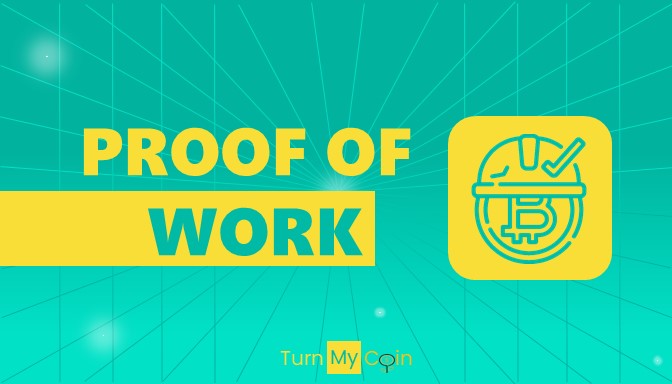
Proof of Work is the most famous consensus mechanism. It is used by the most popular cryptocurrency, your own Bitcoin. Proof of Work uses an algorithm that involves guessing Hashes.
Miners ‘work‘ to solve a complex arithmetic equation using computing power (Application-Specific Integrated Circuit – ‘ASICs‘) in the Proof of Work mechanism. The first miner who solves this equation gets to add a new block. The miner also gets a reward for the effective work that he puts in.
I have written an exhaustive article on Proof of Work here.
However, the most important drawback of this system is that it requires a lot of energy. Hence, many experts have regularly criticized Bitcoin and other cryptocurrencies using PoW for being energy inefficient.
Few popular Cryptocurrencies using PoW:
2. Proof-of-Stake (PoS)
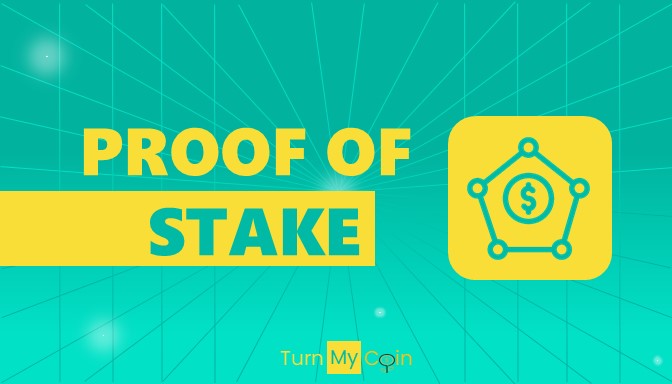
Proof of Stake achieves consensus using ‘Staking‘. The users of PoS cryptocurrency hold their coins in order to validate transactions. Accordingly, the successful validators receive Staking rewards. Suggested reading: What is Staking of Cryptocurrencies? An amazing way to claim rewards
The users stake their crypto assets, preferably in Staking pools called nodes. The PoS algorithm then selects the biggest (in terms of assets held) node and gives it rights to validate transactions.
You can get complete information about Proof of Stake in this article.
Few popular Cryptocurrencies that use the Proof of Stake mechanism:
3. Proof-of-Participation

Proof-of-Participation is a blockchain consensus system that takes into account the quality of a node and its participation in a network before giving it the ability to validate transactions, add new blocks, and receive awards.
The participation score determines the quality of a node – which depends on multiple factors.
So, if a node broadcasts a valid transaction to its peers, nodes will receive this data and check for its validity. Every time a node transmits data to another node, the recipient node generates a digitally signed receipt after checking its legitimacy. These receipts have a certain combined value depending on the quality of the transactions.
The node will collect these receipts until its turn to add a new block. Once it adds a new block, the node publishes these collected receipts after passing them through a few filters. Other nodes in the network validate these receipts which, in turn, affect (increase/decrease) the participation score of the node.
If the participation score of a node reaches 0, it loses the ability to add new blocks and/or receive awards.
Based on these participation scores, the system sorts the “potential” blocksmiths (or miners) for the addition of the next block in a pseudo-random manner. If a node skips its turn in the queue to add a new block, its participation score is instantly reduced. Similarly, if a node creates a new block on time while generating quality receipts, its participation score increases.
Nodes get rewards upon the successful addition of a block. The higher the participation score of a node, the greater will be its chance to receive these rewards.
An example of a popular Cryptocurrencies that use the Proof of Participation mechanism is MotoCoin (MOTO)
4. Proof-of-Activity (PoA)
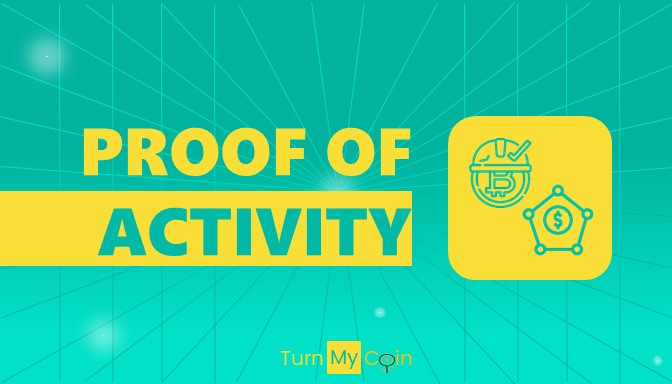
Proof-of-Activity or PoA is a blockchain consensus algorithm that combines the concept of Proof-of-Work (PoW) and Proof-of-Stake (PoS). It incorporates the best of both mechanisms. The mining process starts with PoW and then PoS takes over.
Let me explain!
In a Proof-of-Work system, the PoW mechanism is behind the mining process, while PoS guides the verification of a block before its addition to the blockchain network. When someone makes a transaction, miners compete to find a new block just like in a PoW system. The system assigns the responsibility of signing (or validating) the block to a group of random validators. These validators are the nodes who have more cryptocurrency in the network, like in a PoS system.
Once the new block gets signed, the reward is split among miners and validators who contributed to the entire process.
Both PoW and PoS systems have their flaws. PoW requires too much energy and computing power and PoS doesn’t successfully counter the chances of a 51% attack. Given that, Proof-of-Activity often faces critique due to its partial use of two partly-flawed consensus mechanisms.
Example of PoA: Decred (DCR) uses PoA as its primary consensus mechanism.
5. Proof-of-Selection

Kennie Jenkins, former Navy and founder of Cyberspec, invented Proof-of-Selection by combining Byzantine General’s Dilemma and his expertise in cybersecurity. The Byzantine General’s Dilemma basically is how multiple generals must agree on an attack or retreat plan without having a reliable way of communication.
Before getting into the consensus mechanism itself, let’s understand two phrases – an eligible node and PseudoRF function.
An eligible node is someone who:
- Is active, and
- Has used their digital signature to register their public key into the network.
Now, the PseudoRF function is a function that picks eligible nodes to add the next block to the network.
The entire network closely monitors every transaction in a Proof-of-Selection system. Besides, these transactions are also timestamped. Even when an eligible node selects a block; the rest of the network has to agree on the validity of the proposed block for it to become a new block.
Once the miner adds a block, its creation timestamp and the hash key guide the PseudoRF function to make the selection of the next eligible node.
If an eligible node tries to add an invalid block or doesn’t respond after the PseudoRF function selects it, the system declares it as a dead node (Dn) and removes it from the selection process.
6. Delegated Proof-of-Stake (DPoS)

In simple terms, DPoS is a democratic blockchain consensus algorithm that takes into account the votes of stakeholders to choose delegates (also known as “witnesses” or “block producers”) who are responsible for adding new, valid blocks to the network.
The voting power of a node depends on the number of coins it holds. A user can either vote for a delegate himself or choose to give its voting power to a different node.
The number of delegates is between 21-101. Once a delegate validates and adds a new block to the chain, they receive awards. The voters for the delegate receive a portion of these awards.
The DPoS algorithm takes into account the reputation of a node before qualifying it as a “delegate”. If a witness or a delegate node misbehaves, a different delegate quickly replaces them.
In many cases, a portion of the coin holdings of a delegate is stored by the network which is confiscated if they misbehave. The voting process is continuous which keeps the race to become the most reputable (a delegate with the most votes) quite competitive.
When compared to Proof-of-Work (PoW) or Proof-of-Stake, DPoS is more scalable and validates more transactions per second – which means a longer, more secure blockchain network. Daniel Larimer, a developer and crypto-entrepreneur, developed Delegated Proof-of-Stake aka DPoS.
The drawback of this mechanism is that a certain level of decentralization has to be foregone. The power to validate remains in certain hands and the system only creates an ‘illusion‘ of decentralization.
Example of a cryptocurrency using DPos mechanism for consensus: Lisk (LSK)
7. Proof-of-Burn (PoB)
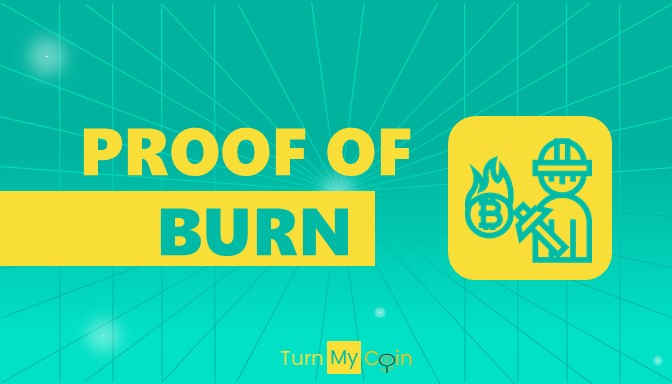
Proof-of-Burn addresses the high energy consumption requirement of Proof-of-Work.
Before we get into the Proof-of-Burn or PoB consensus mechanism, let’s understand the process of “burning” in the context of cryptocurrencies.
The developers of a cryptocurrency perform the process of burning to reduce inflation. They send a batch of cryptocurrencies to an unspendable token. The balance of this token is publicly visible, no one can access its contents.
PoB used the coin-burning process to counter the high energy consumption of the Proof-of-Work (PoW) consensus mechanism. So, instead of real mining, blockchains that use PoB rely on “virtual mining rigs” to validate cryptocurrency transactions.
Therefore, in a PoB-powered blockchain network, a node has to show interest by initiating coin burn to become a miner. The more coins a node burns, the higher is their mining power. The higher a miner’s mining power is, the more will be their speed to validate new transactions, add new blocks, and hence, get more rewards.
Example of PoB: Slimcoin uses a customized implementation of PoB to validate transactions.
8. Proof-of-Capacity (PoC) or Proof-of-Space (PoSPACE)
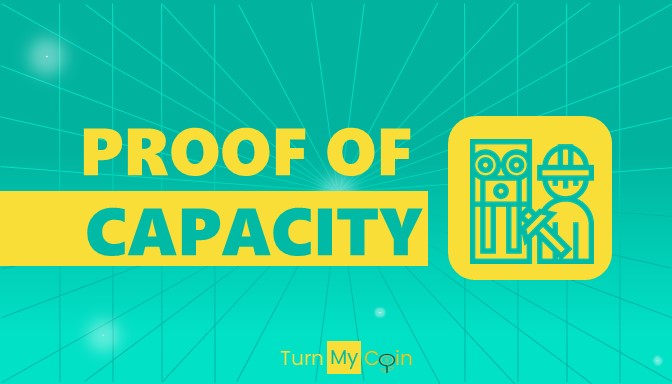
Proof-of-Capacity or PoC uses the available free hard disk space of miners to distribute the rights to validating cryptocurrency transactions aka mining.
In a PoC-powered system, a list of possible solutions (or hashes that validates a cryptocurrency transaction) is hidden in the available hard disk spaces of the participating miners before the race to find the winning hash begins. So, if a miner has more free hard disk space, they have more chances to find a valid hash.
The process of validating a transaction and adding a new block in a PoC-powered system is a two-step process – Plotting and Mining.
A list of possible solutions is plotted in the available hard disk spaces of the miners. Each of these plotted values is number 0 to 8191; 8192 hashes in total. These hashes are paired in “scoops” as such that every hash is a combination of adjacent hashes.
In the mining process, a node calculates a random scoop number and uses its data to estimate a deadline value to find the winning hash. The process keeps repeating until the miner selects the one with the least deadline value. No other miner can add a new block for the duration of the proposed deadline value.
Let’s say that the last block was added to the network at 11:01:00 and the deadline value proposed by a miner is 50 seconds, the miner will get 50 seconds to validate the transaction, add a new block, and win the mining reward till 11:01:50.
Examples of PoC: Burstcoin is a PoC-powered cryptocurrency. Other than Burstcoin, Storj, SpaceMint, and Chia use the Proof-of-Capacity consensus mechanism.
9. Proof-of-Spacetime (PoSt)
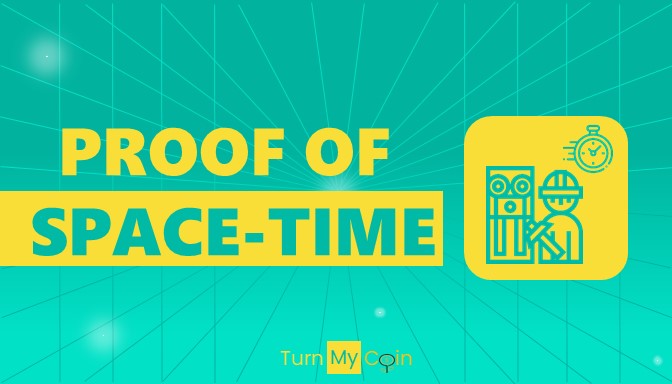
Proof-of-spacetime or PoSt chooses miners upon verifying the network’s data they have (physically) stored over a certain period of time. There is no incentive for a potential miner to morph the data they’ve stored but, when they become a miner, stand to win the mining reward.
In a PoSt-powered system, a batch of nodes is chosen and their data is read for verification. Upon successful verification, the selected nodes become miners that work to validate a cryptocurrency transaction.
The idea is to assess a node’s vested interest in becoming a miner by verifying the sanctity of reserved space on their own hard disks during a period of time.
In many ways, PoSt is similar to Proof-of-Work except that PoSt takes available hard disk space into consideration as compared to the computing power of a node. This ensures the decentralization of a PoSt-powered blockchain network.
When compared to PoC, PoSt wins under two major factors:
- A node can generate (arbitrary) huge amounts of hard disk space when time is not a factor.
- If the computation cost is less than the storage cost, a PoC miner can dump all the stored data. In a PoSt-powered system, this isn’t possible.
Examples of PoSt: Filecoin uses the PoSt consensus mechanism.
Summing it up!
Cryptocurrency is in its nascent stage of development. There are quick developments happening all across the cryptocurrency arena. The above list of different consensus mechanisms or different proofs of cryptocurrency, therefore, remains an illustrative list only.
Each mechanism has its own pros and cons. But the most important feature other than security and integrity (which most of the protocols ensure) is scalability. Many protocols mentioned above are not highly scalable, as is the need of the hour.
However, blockchain developers are coming up with new and advanced ideas to appeal to investors every day. Hence, we may see a lot of new protocols getting developed to achieve consensus in the Cryptocurrency space.


